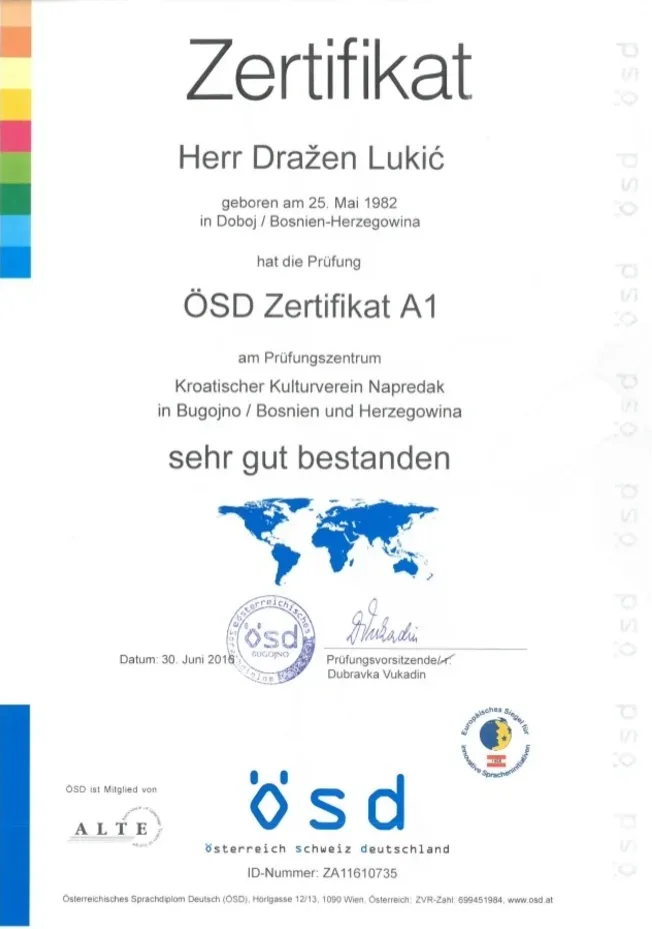Comprehending the ÖSD Exam: A Gateway to Proficiency in German
The ÖSD (Österreichisches Sprachdiplom Deutsch) exam is a standardized language efficiency test created to evaluate and license German language abilities. Recognized internationally, the ÖSD exam caters to different students, ranging from newbies to innovative speakers. This post intends to provide a useful overview of the ÖSD exam, detailing its structure, levels, preparation methods, and frequently asked concerns.
The Importance of the ÖSD Exam
In a globalized world where proficiency in numerous languages is highly valued, the ÖSD exam serves numerous essential functions:
Certification of Language Proficiency: The ÖSD exam offers certificates that are acknowledged in Austria and other German-speaking nations, assisting in job opportunity and university admissions.
Standardized Assessment: The exam provides a standardized evaluation of language abilities, which can be helpful for academic and professional purposes.
Structured Learning Path: The ÖSD offers a clear structure for language students, guiding them toward achieving particular language goals through a structured curriculum.
Structure of the ÖSD Exam
The ÖSD exam is divided into different levels lined up with the Common European Framework of Reference for Languages (CEFR). Each level tests four essential language abilities: listening, reading, writing, and speaking.
Levels of the ÖSD Exam
The ÖSD offers assessments at 6 levels, corresponding to the CEFR structure:
A1: Beginner
A2: Elementary
B1: Intermediate
B2: Upper Intermediate
C1: Advanced
C2: Proficiency
Each level has particular requirements and expectations, allowing prospects to focus on suitable products and practices based on their proficiency.
Exam Components
The ÖSD exam is divided into four distinct elements:
Listening Comprehension: Candidates listen to different audio products (discussions, interviews, and discussions) and answer understanding questions.
Checking out Comprehension: This area includes texts of varying lengths and complexities, accompanied by questions that examine understanding and interpretation.
Writing: Candidates are required to produce written texts (letters, essays, or reports) depending on the level, showing their capability to communicate details and arguments effectively.
Speaking: The speaking part typically involves a discussion with an inspector, needing candidates to demonstrate fluency, pronunciation, and grammatical accuracy.
Preparation for the ÖSD Exam
Preparing for the ÖSD exam requires a strategic method, including numerous study methods and resources. Here are some reliable strategies:
Study Methods

Enroll in a Language Course: Structured courses can supply assistance and a methodical approach to language learning.
Experiment Sample Tests: Using main ÖSD sample materials can acquaint prospects with the exam format and question types.
Sign Up With a Study Group: Collaborating with peers can improve learning through shared understanding and accountability.
Use Language Learning Apps: Mobile applications can support language acquisition, offering vocabulary practice and interactive workouts.
deutschkurs österreich and Workbooks: Choose products that align with the target level of the ÖSD exam.
Online Platforms: Websites committed to language learning typically provide complimentary resources, consisting of grammar workouts and vocabulary lists.
Tutoring: Personal guideline from experienced teachers can offer customized feedback and targeted practice.
Tips for Success
Set Realistic Goals: Break down the preparation process into manageable milestones.
Engage with Native Speakers: Regular interaction with native German speakers can enhance conversational abilities and cultural understanding.
Immerse Yourself in the Language: Consume German-language media-- such as films, podcasts, and books-- to boost listening and checking out skills.
Practice Regularly: Consistency is key in language learning; designate time each day for practice throughout all 4 skills.
Often Asked Questions (FAQs).
1. What are the main differences in between the ÖSD exam and other German language exams?
The ÖSD exam particularly concentrates on contemporary German usage and culture, using an unique viewpoint compared to other exams, such as the TestDaF or the Goethe-Zertifikat. Each assessment has different structures, levels, and emphasis on various abilities, catering to specific needs and target market.
2. For how long does it take to prepare for the ÖSD exam?
Preparation time differs substantially based on the prospect's existing language skills. Usually, it can take anywhere from a couple of months to over a year of devoted study to get ready for each level.
3. Is there an age limitation to take the ÖSD exam?
No, there is no age limit for prospects wanting to take the ÖSD exam. People of all ages, from children to adults, are motivated to get involved based on their language efficiency and goals.
4. Where can I take the ÖSD exam?
ÖSD examinations are administered at different licensed evaluation centers worldwide. Prospects can visit the official ÖSD site to find a center near them and to check offered dates.
5. How are ÖSD exam results scored?
Prospects receive a rating for each element of the exam, which is then combined to offer a general proficiency level. Results are usually available a few weeks post-examination.
Conclusion.
The ÖSD exam is a highly regarded language efficiency test that serves as a necessary tool for people looking for to demonstrate and accredit their German language skills. Through efficient preparation, structured knowing, and access to the ideal resources, candidates can achieve their desired efficiency level, improving their opportunities in both academic and expert domains.
